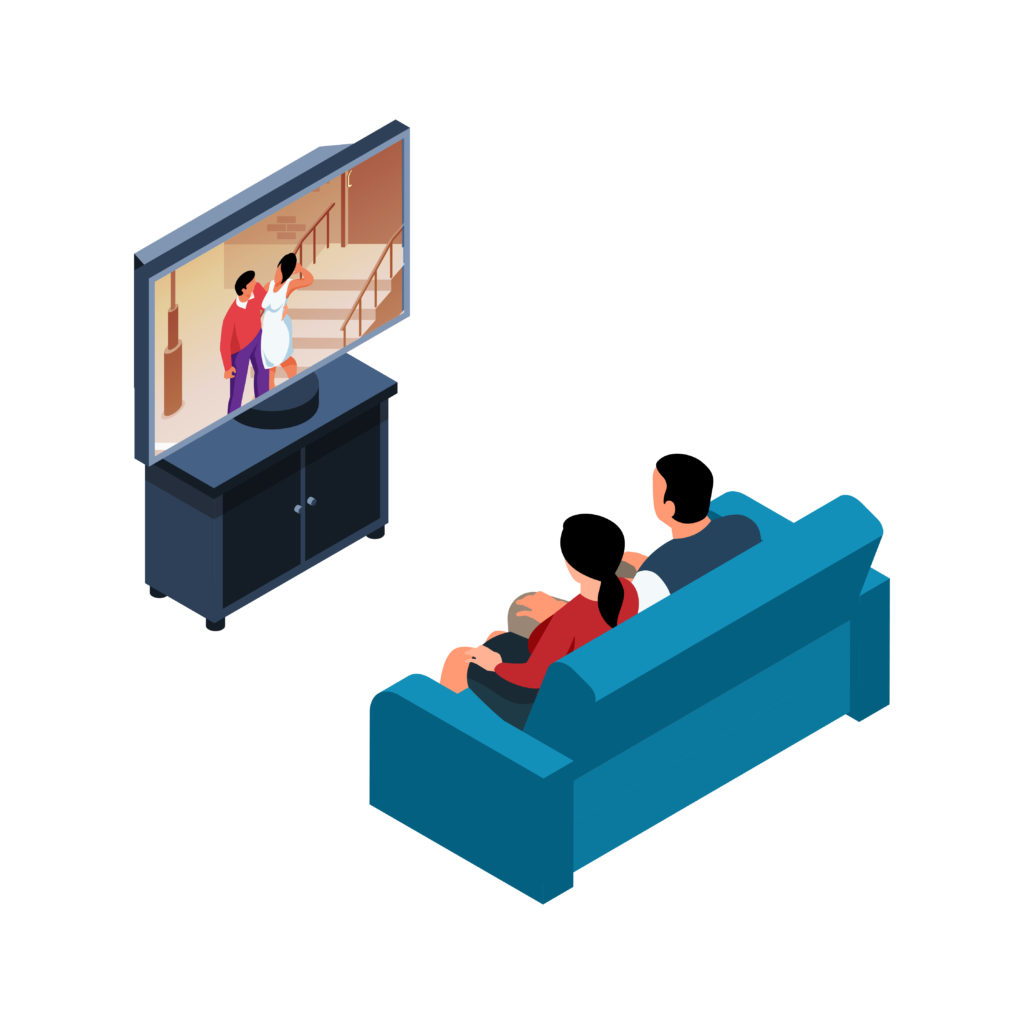M+E Connections

Viewers, not Reviewers, Determine Who Wins the Streaming Melee
Story Highlights
Have you ever wondered — really wondered — why cable TV fell out of favor with folks?
Seriously, they said they had “everything” people wanted…fake reality shows; game shows; orchestrated shows of strength, endurance, coordination, perseverance; news; Dick Wolf (and a few others) series — cops, fire engines, hospitals — and ads … lots and lots of ads.
Okay, you look at the list now and might think it’s a little boring. But it’s predictably boring and there’s something to be said for predictability.
Oh yeah, we forgot, a monthly cable subscription bill that you could count on to go up a couple of times of year. But that too was … predictable.
Suddenly, the home entertainment “industry” fell apart, and everyone got into the race for eyeballs and dollars.
They are all (linear, SVOD, AVOD, FAST, multichannel video programming distributor, home sets, mobile) being measured/judged by financial/market research experts on how well they’re capturing and keeping their share of the finite pool of consumers around the globe.
Researchers at MAGNITE point out that in 18– to 44-year-old households, almost none of them watch linear TV (20 minutes or less per day). They overlook the fact that that in industrialized countries, the older age group — the one with the money — is staying close to their day/time viewing schedules.
 Even more interesting, according to a recent study by the Television Bureau of Advertising, local broadcast TV had 8-10 times more adult viewers than streaming options.
Even more interesting, according to a recent study by the Television Bureau of Advertising, local broadcast TV had 8-10 times more adult viewers than streaming options.
To free folks from the expensive TV bundles, tech firms — Netflix, Amazon, Apple — came up with this idea of any time, any place, any screen viewing free of advertising and only a fraction of your cable bill. For only $10 or so, you could watch unique content. “Everyone” began cutting their cord (cable).
Of course, the early adopters to this new-found entertainment freedom were folks who never had a bundle — their parents, that older age group, picked up the tab. The problem was that no one subscription service had all of the shows/variety people wanted.
The early subscription services (Netflix, Amazon, Hulu, Google/YouTube) showed that they could bypass the cable guy and go directly to the consumer — no retrans fee and a closer/personalized relationship. So, studios like Warner Bros., Disney and others around the world saw an opportunity to be the service of choice. After all, their content was better than all the rest.
Networks including ABC, NBC, CBS, BBC, Sky, Univision, Star, Telemundo, Canal and hundreds of local/regional networks saw their opportunity and set up their own streaming/DTC (direct to consumer) service. Ordinary folks were left with the complicated task of building their own bundle, one $10 service at a time until suddenly … . Yep, you had all the services you wanted with most of the shows you wanted. All you had to remember was who had what … and where.
Sure, you were rapidly approaching the cost of your old cable service, but you improved your memory and got to practice the fine art of self-control.
During all this chaos, Netflix continued to amaze/confound its competition becoming the global leader in streamers with a viewing and production presence in 190-plus countries.
As subscriptions continued to grow (about 232.5 million) Netflix’s Reed Hastings often highlighted the streamer’s success and leadership position by the fact that 38 percent of their total viewers shared borrowed passwords and 16 percent of pirate viewing was on Netflix content.
Now that’s popularity!
When fiscal growth slowed, co-CEO Ted Sandaros and his new partner Greg Peters stepped forward to show stakeholders and the industry they were still the streaming leaders and addressed the borrowing/piracy head-on.
While piracy and borrowing have been around since entertainment went digital, the other services stayed in the stands to see how the two fared.
Wall Street cheered but said Netflix would be eaten alive.
The rush to the exit didn’t happen.
Folks weren’t happy with the change but hey, the content was still worth it; and it was time your kids and friends quit mooching off you.
The organization also backed away from Hastings’ early, “no ads, never” philosophy and said they’d give you a cheaper option with “a few” ads.
 The key was not squeezing great content between huge ad blocks that harken back to the pay TV days — 20 minutes of ads for 40 minutes of entertainment.
The key was not squeezing great content between huge ad blocks that harken back to the pay TV days — 20 minutes of ads for 40 minutes of entertainment.
In addition, Morning Consult, GWI and other researchers suddenly learned that consumers don’t mind ads if they are educational, informational and entertaining.
All of that is possible today because streamers amass a ton of information about subscriber likes, dislikes, household and more.
They continually capture, digest and use that information to more efficiently and effectively develop new movies/shows you really want to see and make content recommendations.
Yes, the recommendation engines incorporate a lot of generative AI that helps keep you happy, satisfied, connected.
These same tools can assist marketers in making their ads more efficient and more effective. People don’t like advertising that’s too invasive, too personal, too creepy.
Yeah, a little too much help.
But we’re accustomed to ads — even like the good ones.
We just don’t like too much of a good thing.
The one thing the subscription services don’t tell you is that when you move to their lower-cost ad-supported services, you also give up a few things in addition to your personal information.
You also give up certain movies/shows they deem primo until after an unspecified period … sorta’ like theatrical windows. They are also rethinking their streaming costs/strategies.
WBD moved dozens of films and TV series to their vault while Disney removed more than 20 shows/films from their viewing library. Others are silently doing the same because you can’t handle too much of a good thing all at once. That’s about the same time we and others made a U-turn and went back to using a couple of the new/old streaming bundles … FAST.
 FAST isn’t glamourous. Heck, it really isn’t organized — just a dizzying array of streaming channels inside a single point-of-entry. You know, turn it on, search for something to watch. JustWatch still gives us a hint as to where we can watch a specific show/movie or something in each genre.
FAST isn’t glamourous. Heck, it really isn’t organized — just a dizzying array of streaming channels inside a single point-of-entry. You know, turn it on, search for something to watch. JustWatch still gives us a hint as to where we can watch a specific show/movie or something in each genre.
It’s not perfect but it is a relaxing way to window shop our free and ad-supported “channels” and even see what we’re missing on the subscription services.
The heck of it is, we’ve built up a “got to watchlist” of movies/TV shows built up on the free streaming guide and we wonder when we’ll have time to watch the stuff. Home screen viewing has evolved slowly until there’s a seismic shift. Then everything changes all at once and the poor consumer has to figure it out.
Of course, it’s a small consolation to us that we don’t think the streaming bosses don’t have a clue on how this odyssey is going to end either.
But speaking of ordinary viewers, Julio was right in Champions when he said, “These guys are capable of a lot more than you think. You’d be surprised.”
Especially when he added, “Impossible is not a fact. It’s an opinion.”
In the final analysis, the viewing public decides which content services win and which ones lose … and that’s a fact!
Andy Marken [email protected] is an author of more than 800 articles on management, marketing, communications, industry trends in media and entertainment, consumer electronics, software and applications.









